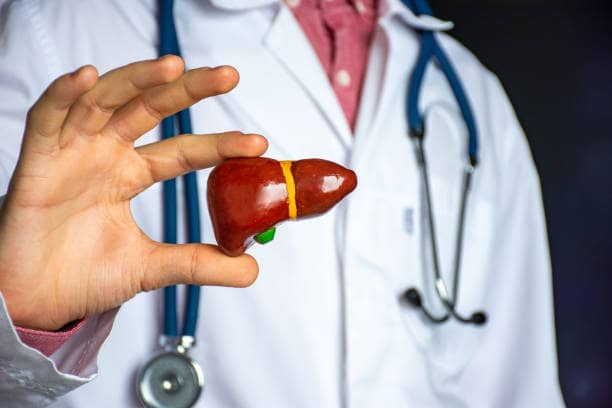How to Diagnose and Treat Tuberculosis: Tuberculosis (TB) has been a significant global health concern for centuries, affecting millions of people worldwide. It is an infectious disease caused by the bacterium Mycobacterium tuberculosis and primarily affects the lungs, although it can also target other parts of the body. While advancements in medical science have led to improved diagnostics and treatments, TB remains a serious threat, particularly in developing countries and among individuals with weakened immune systems. In this article, we will delve into the various aspects of treating tuberculosis, from diagnosis to the latest treatment options.

1. Diagnosis of Tuberculosis :
Accurate and timely diagnosis is the first crucial step in treating tuberculosis effectively. Several methods are used to diagnose TB, ranging from traditional to modern techniques:
a. Tuberculin Skin Test (TST): Also known as the Mantoux test, this involves injecting a small amount of TB protein (tuberculin) under the skin. If a raised bump develops within 48 to 72 hours, it indicates exposure to TB bacteria.
b. Chest X-rays: X-rays help identify abnormalities in the lungs, such as cavities or infiltrates, which are indicative of active TB.

c. Sputum Tests: This microscopic examination of sputum samples helps detect TB bacteria. However, it may not always yield accurate results.
d. GeneXpert MTB/RIF: This molecular test quickly identifies TB bacteria and checks for drug resistance simultaneously, aiding in early diagnosis.
e. Culture Tests: These tests involve growing TB bacteria from collected samples. While more time-consuming, they provide valuable information about drug susceptibility.
2. Treating Active Tuberculosis :
Effective treatment of active TB involves a combination of medications known as anti-tuberculosis drugs. The standard treatment regimen typically consists of a four-drug combination:
a. Isoniazid b. Rifampin c. Pyrazinamide d. Ethambutol
The treatment regimen usually lasts for six to nine months, and adherence to the prescribed medication schedule is crucial to prevent the development of drug-resistant TB strains. They are often used in combination to effectively treat TB infections. Regular follow-ups and medical monitoring help ensure the treatment’s effectiveness and manage potential side effects.
3. Drug-Resistant Tuberculosis :
Drug-resistant TB occurs when the bacteria become immune to one or more of the standard anti-tuberculosis drugs. This type of TB requires specialized treatment regimens, often involving second-line drugs, which are more potent but also associated with more severe side effects. Extensively drug-resistant TB (XDR-TB) is an even more challenging form, as it is resistant to both first-line and second-line drugs.
4. Adverse Effects and Monitoring :
Tuberculosis medications can have side effects ranging from mild to severe. Common side effects include liver toxicity, gastrointestinal discomfort, and skin reactions. Regular monitoring of patients is essential to detect any adverse effects early and adjust the treatment regimen as necessary. Healthcare professionals must strike a balance between managing side effects and ensuring the effectiveness of the treatment for the overall health of the patients.
5. Directly Observed Therapy (DOT) :
To enhance treatment adherence and prevent the development of drug-resistant strains, many healthcare programs implement Directly Observed Therapy. This involves a healthcare worker or designated individual directly observing the patient taking their medication. This approach has proven effective in ensuring patients complete their treatment regimens.
6. Importance of Nutrition and Support :
A well-balanced diet and proper nutrition play a vital role in aiding the recovery of TB patients. Malnutrition can weaken the immune system, making it more challenging for the body to fight off the infection. Adequate nutrition supports the body’s immune system response and can contribute to a quicker recovery. Additionally, patients often require emotional and psychological support throughout the treatment process.
7. Supportive Care
Alongside medications, proper nutrition and a healthy lifestyle play a significant role in tuberculosis treatment. Patients need to maintain a balanced diet rich in vitamins and nutrients to support their immune systems. Avoiding alcohol and tobacco is also essential, as these substances can hinder recovery and exacerbate lung damage.
8. Preventive Treatment
For individuals with latent TB infection (LTBI), who are infected with TB bacteria but do not show symptoms, preventive treatment can help reduce the risk of developing active TB in the future. This usually involves taking a single drug, such as isoniazid, for several months.
9. Vaccination
The Bacillus Calmette-Guérin (BCG) vaccine is used in some countries to prevent severe forms of TB in children. While it may not fully prevent TB, it can reduce the risk of severe complications.
10. Collaborative Efforts :
The battle against tuberculosis requires a collaborative effort from governments, healthcare systems, non-governmental organizations, and the global community. Investments in healthcare infrastructure, diagnostic tools, large testing machines, and accessible treatment are crucial to effectively manage TB on a global scale.
11. Research and Innovation
Efforts to combat TB continue through ongoing research and the development of new treatment strategies. Novel drug combinations, shorter treatment durations, and more accurate diagnostic methods are being explored to improve outcomes and reduce the global burden of TB.
Conclusion :
Tuberculosis remains a formidable global health challenge, demanding a comprehensive approach to diagnosis, treatment, and prevention. Through early diagnosis, adherence to treatment regimens, and proper supportive care, patients can successfully overcome this infectious disease. However, to truly overcome TB, concerted efforts are required at the societal, medical, and governmental levels to ensure universal access to accurate diagnosis, effective treatment, and preventive measures. With continued research and innovation, we can aspire to a future where tuberculosis is no longer a major threat to public health.







One thought on “How to Diagnose and Treat Tuberculosis?”